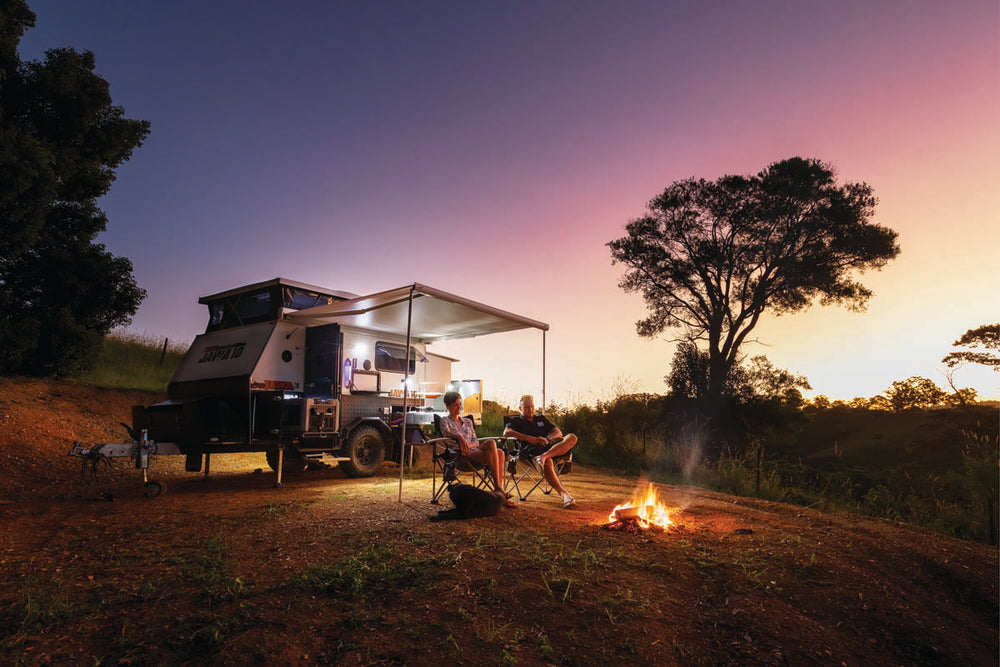

In this article, David answers a question from a reader about the things to consider when upgrading to lithium batteries in their caravan.
Hi 12V Guru,
We have an older Jayco Sterling with one of your BMPRO systems in there and we want to upgrade to lithium batteries. Other than the battery choice, what else do we need to consider?
Miles Fanner
Hi Miles,
Thanks for your great question that not everyone asks before they start this type of project. As more RV travellers embrace off-grid adventures, the demand for reliable, high-capacity battery systems continues to rise. Whether you’re adding air-conditioning, induction cooktops or simply want to stay out longer without mains power, upgrading to a larger battery bank — especially with lithium batteries — is a logical move. But it’s not as simple as swapping out one battery for another.
Here’s what we recommend every caravan owner needs to consider before making the leap.
I’m not going to delve into the first point too deeply as we have covered it in many articles before, but lithium batteries need to be treated differently. They require specific charging profiles, usually managed by a lithium-compatible charger or power management system (PMS). Simply replacing your old AGM with lithium won’t deliver results unless your system is built to support it. It’s highly likely that it won’t be able to charge the lithium batteries properly. Also, unlike lead-acid, lithium doesn’t tolerate float charging or trickle top-ups.
You’ll need:
- A charger with a dedicated lithium profile (14.4–14.6V charge, no float)
- Solar regulators that support lithium charging (MPPT is preferred for efficiency)
If you’re running an older setup, it’s highly likely you’ll need to upgrade chargers to ensure the lithium bank performs and lasts as intended.
Plan your battery installation space
Larger banks need more space, so it is important to consider the physical layout of where these will be installed. It is possible to just switch over from a standard 100Ah AGM to lithium which will double the energy available, however we see many RVers going bigger again. You’ll need to consider the footprint and volume the new batteries will take up, especially as the cables will change and if there are power units (such as DC-DC chargers or inverters) in the direct vicinity ensure their airflow for cooling is not impeded.
Next to consider is your wiring and protection upgrades as with more capacity and higher current flow, your cabling, fuses and protection gear might not be up to scratch. Key areas to check include the cable gauge and fusing. Lithium batteries can be charged and discharged at much higher current than a standard lead acid battery, so therefore it is critical — from a safety and effectiveness perspective — to evaluate the correct cable gauge. Undersized wires can cause voltage drop, overheating and inefficiency. Use quality copper cabling suited to your system’s maximum load.
Secondly, evaluate fusing requirements. Every cable connected to your battery should be fused appropriately. This protects both the system and the occupants. With more current upgrading the capacity and potential the fuse holder will be very important.
After you have the right physical space, cable and fusing covered, consider the shunt or battery monitor which you will be using. Some lithium batteries have their own communications setup, but these generally won’t be compatible with your installed PMS. With increased current charging through the setup, ensure that the shunt has the capacity to monitor this. It would also be wise to consider the software and interface that is connected to your system. Can it handle these higher variables?
Some high-end lithium systems integrate with touchscreen interfaces, mobile apps or central control units. This adds convenience, real-time diagnostics and better system protection — but often requires compatibility between all components (charger, battery, inverter, monitor).
Stick to a single-brand ecosystem or check that all components are communicating properly to avoid faults or misreadings.Upgrading to a larger lithium battery bank isn’t just a ‘plug and play’ job — it’s more like a home renovation. It needs to be planned properly, using quality components, with compatibility and future upgrades in mind.
If in doubt, work with an experienced auto electrician or 12V specialist. Getting it right the first time will save you frustration, money, and possibly even a tow truck call in the middle of nowhere.
Safe travels,
12V Guru
THE NEXT STEP
If you want to learn the latest caravan news, find the most innovative new caravans and camping gear or get inspired to plan your next adventure off the beaten track, subscribe to our weekly newsletter. We promise to send you only the best content.
Related articles:
12V Guru: Upgrading to lithium batteries
Prepare to go off-grid: A guide to power management







